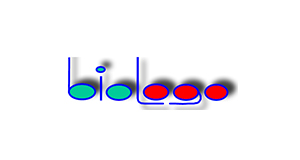Neurofilaments 70/200 kDa
Neurofilaments 70/200 kDa, IgG1, Host: Mouse, Monoclonal, Clone: 2F11
Clone: 2F11.
Background: This antibody may also stain phaeochromocytoma and medullary adrenal cells. Neurofilament proteins are characteristic intermediary filaments of neurons. They are divided into three classes of molecular weights: 70, 160 and 200 kDa. As well central as peripheral nerve fibres are stained with this antibody. Glia cells are antibody negative. Neurofilaments 70 and 200 kDa.
Positive Control: Nerve tissue.
Immunogen: Purified neurofilament proteins from human brain.
Purification Method: Antibody solution in stabilizing phosphate buffer pH 7.3. Contains 0.09 % sodium azide**. The volume is sufficient for at least 100 immunohistochemical tests (100 µl working solution / test). Use appropriate antibody diluent e.g. BIOLOGO Art .No. PU002.
References: 1. Osborn M., Altmannsberger M., Shaw G., Schauer A., Weber K. (1982) Various sympathetic derived human tumors differ in neurofilament expression. Use in Diagnosis of neuroblastoma, ganglioneuroblastoma and pheochromocytoma. Virchows Arch. Cell Pathol. 40; 141-156. 2. Alfonsi F., Darmon M., Forest N., and Paulin D. (1983) Intermediate sized filaments as markers of neuronal differentiation in the role of cell interaction in early neurogenesis. In: Plenum Publishing Corporation A.M. Duprat, A. Kato, and M. Weber eds. pp 157-176. 3. Osborn M., and Weber K. (1983) Biology of disease tumor diagnosis by intermediate filament typing. Lab. Invest. 48; 372-394. 4. Klück P., et al. (1984) Hirschsprung disease studied with monoclonal anti neurofilament antibodies on tissue sections. The Lancet, March 24, 652-653. 5.. Osborn M., Dirk T., Käser H., Weber K., and Altmannsberger M. (1986) Immunohistochemical localization of neurofilaments and neuron-specific enolase in 29 cases of neuroblastoma. Am. J. Pathol. 122; 433-442.
UniProt: P07196.
Caution: *These antibodies are intended for in vitro research use only. They must not be used for clinical diagnostics and not for in vivo experiments in humans or animals. ** The preservative sodium azide is known to be poisonous and potentially hazardous to health. It should be handled only by trained staff. Despite of the product's low azide concentration it must be handled with care. Dispose according to regional rules!
Background: This antibody may also stain phaeochromocytoma and medullary adrenal cells. Neurofilament proteins are characteristic intermediary filaments of neurons. They are divided into three classes of molecular weights: 70, 160 and 200 kDa. As well central as peripheral nerve fibres are stained with this antibody. Glia cells are antibody negative. Neurofilaments 70 and 200 kDa.
Positive Control: Nerve tissue.
Immunogen: Purified neurofilament proteins from human brain.
Purification Method: Antibody solution in stabilizing phosphate buffer pH 7.3. Contains 0.09 % sodium azide**. The volume is sufficient for at least 100 immunohistochemical tests (100 µl working solution / test). Use appropriate antibody diluent e.g. BIOLOGO Art .No. PU002.
References: 1. Osborn M., Altmannsberger M., Shaw G., Schauer A., Weber K. (1982) Various sympathetic derived human tumors differ in neurofilament expression. Use in Diagnosis of neuroblastoma, ganglioneuroblastoma and pheochromocytoma. Virchows Arch. Cell Pathol. 40; 141-156. 2. Alfonsi F., Darmon M., Forest N., and Paulin D. (1983) Intermediate sized filaments as markers of neuronal differentiation in the role of cell interaction in early neurogenesis. In: Plenum Publishing Corporation A.M. Duprat, A. Kato, and M. Weber eds. pp 157-176. 3. Osborn M., and Weber K. (1983) Biology of disease tumor diagnosis by intermediate filament typing. Lab. Invest. 48; 372-394. 4. Klück P., et al. (1984) Hirschsprung disease studied with monoclonal anti neurofilament antibodies on tissue sections. The Lancet, March 24, 652-653. 5.. Osborn M., Dirk T., Käser H., Weber K., and Altmannsberger M. (1986) Immunohistochemical localization of neurofilaments and neuron-specific enolase in 29 cases of neuroblastoma. Am. J. Pathol. 122; 433-442.
UniProt: P07196.
Caution: *These antibodies are intended for in vitro research use only. They must not be used for clinical diagnostics and not for in vivo experiments in humans or animals. ** The preservative sodium azide is known to be poisonous and potentially hazardous to health. It should be handled only by trained staff. Despite of the product's low azide concentration it must be handled with care. Dispose according to regional rules!
| SKU | BILNF101 |
|---|---|
| Manufacturer | BioLogo |
| Manufacturer SKU | NF101 |
| Green Labware | No |
| Package Unit | 1 ml |
| Quantity Unit | STK |
| Reactivity | Human, Mouse (Murine), Rat (Rattus), Pig (Porcine), Dog (Canine), Cow (Bovine), Horse (Equine) |
| Clonality | Monoclonal |
| Application | Immunohistochemistry (frozen), Immunohistochemistry (paraffin), Immunoblotting |
| Isotype | IgG1 |
| Host | Mouse |
| Product information (PDF) | Download |
| MSDS (PDF) | Download |

 Deutsch
Deutsch







